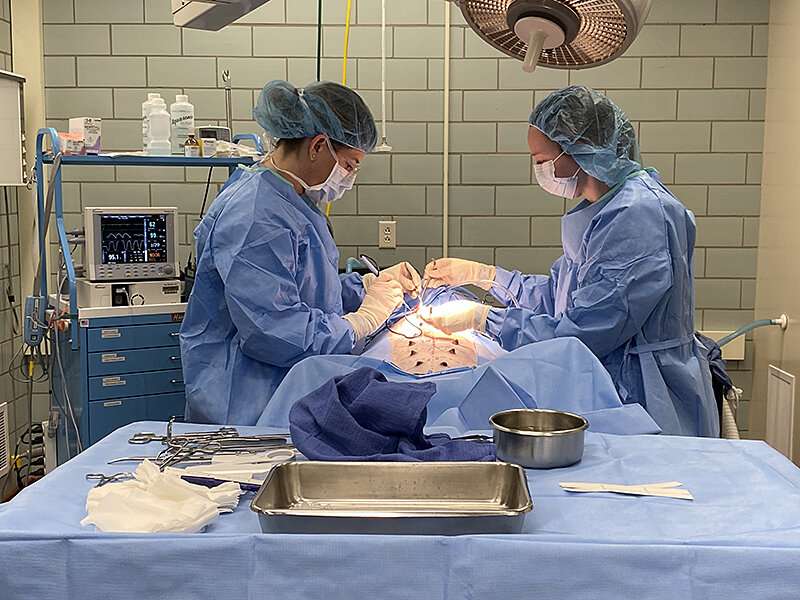
New technology from Purdue University innovators may help improve tissue restoration outcomes for people with breast cancer and other diseases or traumatic injuries.
Purdue researchers, along with fellowship-trained breast surgeon Carla Fisher of Indiana University School of Medicine, teamed up with Purdue startup GeniPhys to develop and perform preclinical studies on a regenerative tissue filler.
This is a first-of-a-kind, in situ scaffold-forming collagen. When applied as a filler for soft tissue defects and voids, it shows promise for accelerating and improving tissue restoration outcomes. The team’s work is published in Scientific Reports.
“It would assist in maintaining the quality of life and emotional well-being of millions of breast cancer survivors each year worldwide,” said Sherry Harbin, a professor in Purdue’s Weldon School of Biomedical Engineering.
The innovators in Harbin’s lab designed and patented the collagen polymer used for this technology. Harbin founded GeniPhys, a Purdue startup focused on the commercialization of the collagen polymer technology.
“Such an approach may also benefit other patient populations in need of soft tissue restoration or reconstruction, including children with congenital defects, individuals with difficult-to-heal skin ulcers, individuals suffering from traumatic injuries and cancer patients requiring resection of tumors within tissues other than breast.”
A National Science Foundation SBIR Phase I award to GeniPhys supported the preclinical validation studies performed by the team, which included biomedical engineers from Purdue’s Weldon School and a fellowship-trained breast surgeon from Indiana University School of Medicine. Jeannie Plantenga and Abigail Cox from Purdue’s College of Veterinary Medicine also were part of the team.
The regenerative tissue filler, when applied to breast tissue voids, such as those associated with breast conserving surgery, restored breast shape and consistency and supported new breast tissue formation over time, including mammary glands, ducts and adipose tissue. The filler also helped avoid wound contraction and scar formation, which can be painful for patients and contribute to breast deformities.
This filler represents a highly purified liquid collagen protein, that when brought to physiologic conditions by mixing with a proprietary buffer, can be applied to tissue voids. The liquid collagen conforms to patient-specific void geometries and then undergoes a self-assembly reaction to form a fibrillar collagen scaffold like those that make up the body’s tissues.
This scaffold has soft tissue consistency and persists, where it induces a regenerative healing response.
Source: Read Full Article
